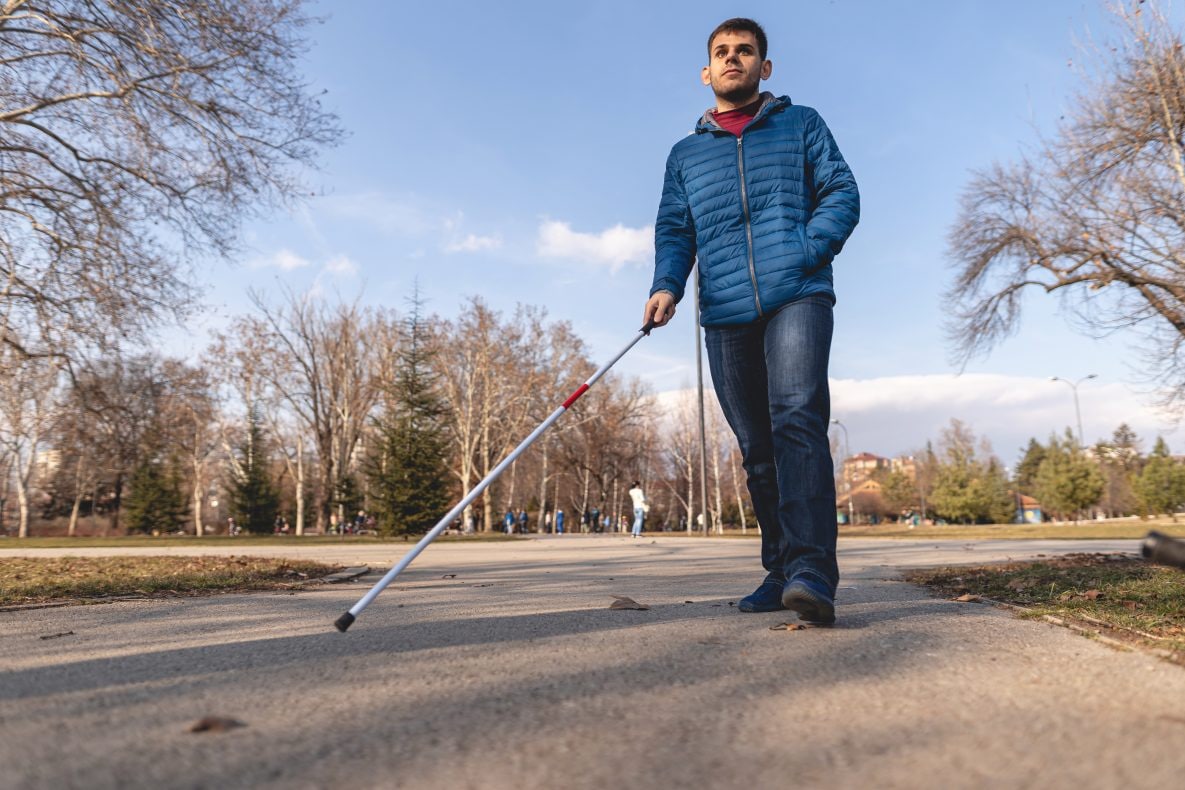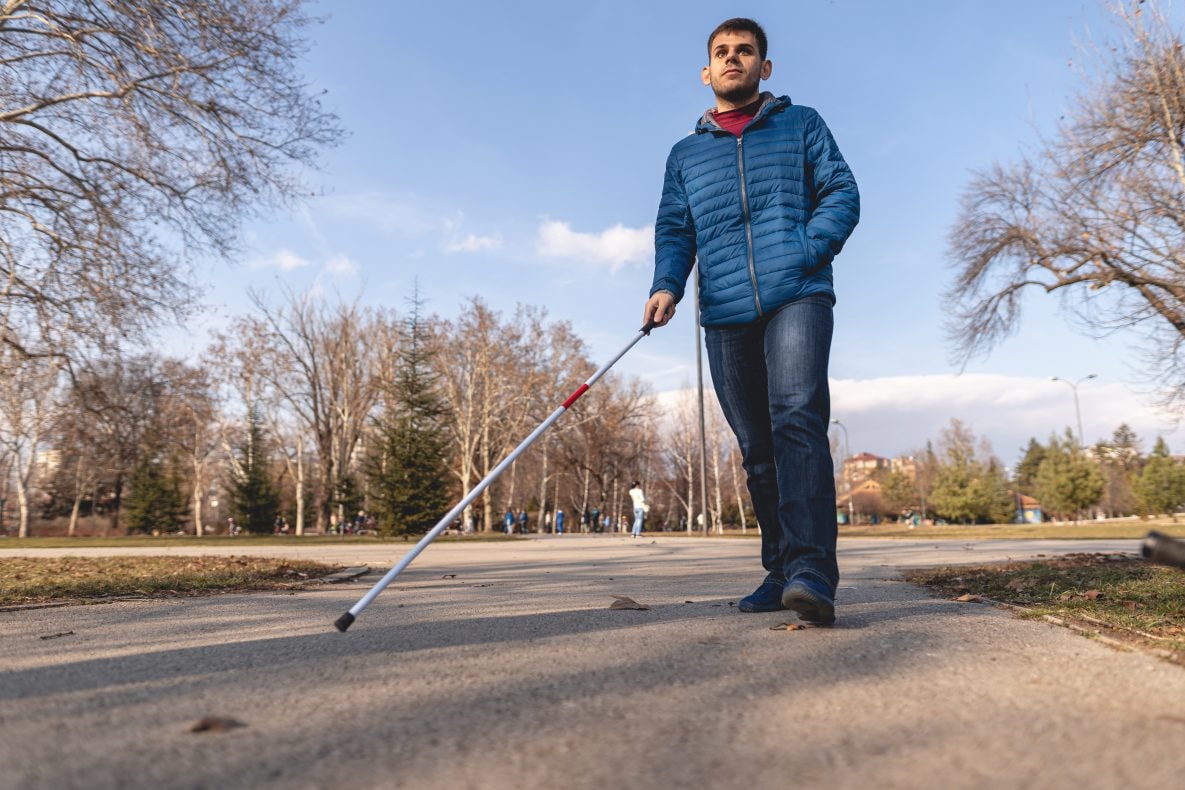
A blind man walks through a park using a white cane.
A disability can be defined as a physical or mental impairment that significantly limits one or more major life activities, such as eating, breathing, walking, working, or caring for oneself. Disabilities can be genetic, acquired through injury or illness, occur at any time throughout life, and can be permanent, temporary, or experienced as part of the aging process. Some disabilities are “visible” or easily detectable, such as the use of a wheelchair, a white cane, a service animal, or a cochlear implant, as there are physical characteristics that indicate a potential disability. However, many disabilities, such as those related to mental health, autoimmune diseases, neurological disorders, and chronic pain, may be “invisible” or less noticeable to those around the person with a disability. It is therefore important to raise awareness and understanding of life with a disability so as not to perpetuate prejudice, reinforce false stereotypes about people with disabilities, or promote ableist ideas that having a disability is some kind of disadvantage. For many people, the disability itself is not the main challenge. Rather, it is the environment in which they live, learn, work, and play that creates the greatest challenges. This means that the attitudes of others and those around us are not inclusive, limiting our personal independence, well-being, and overall success.

